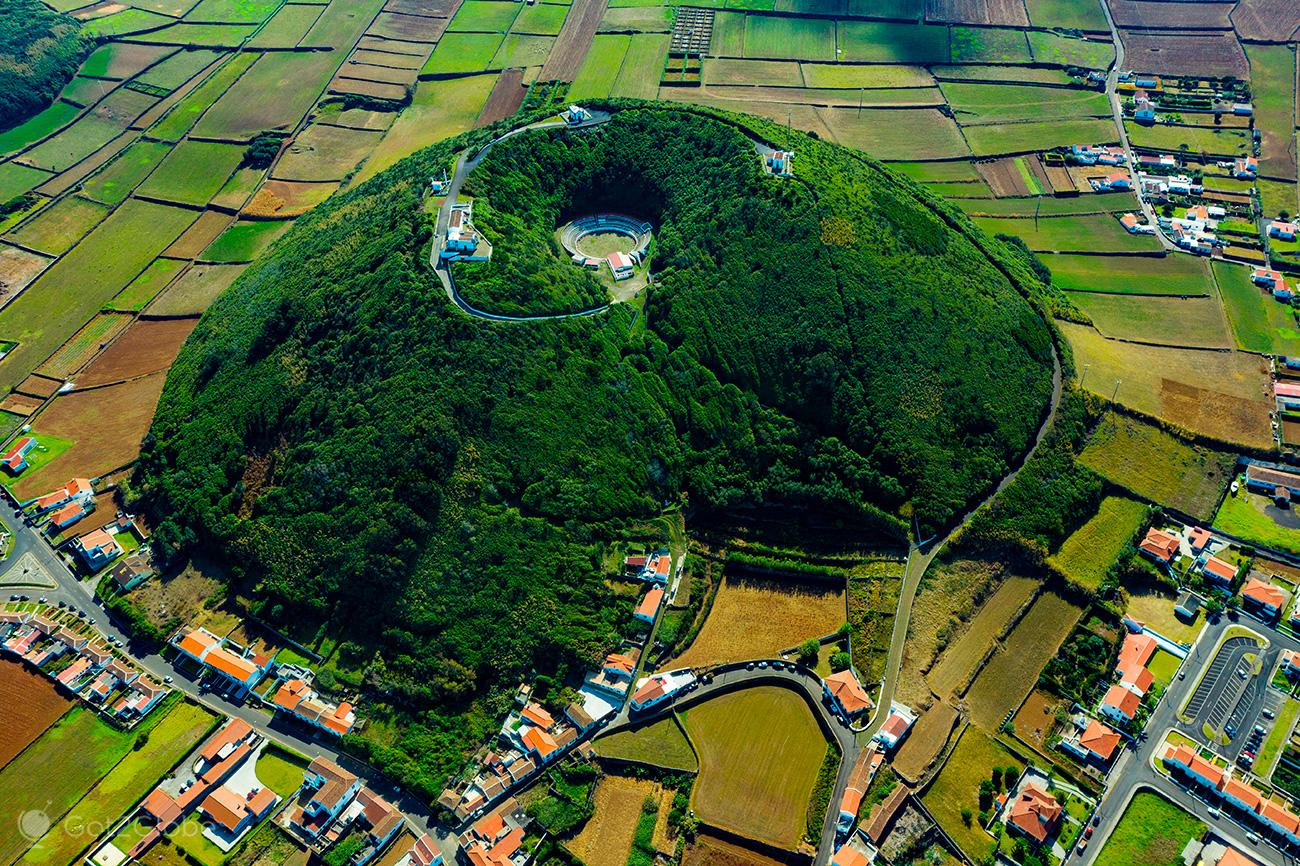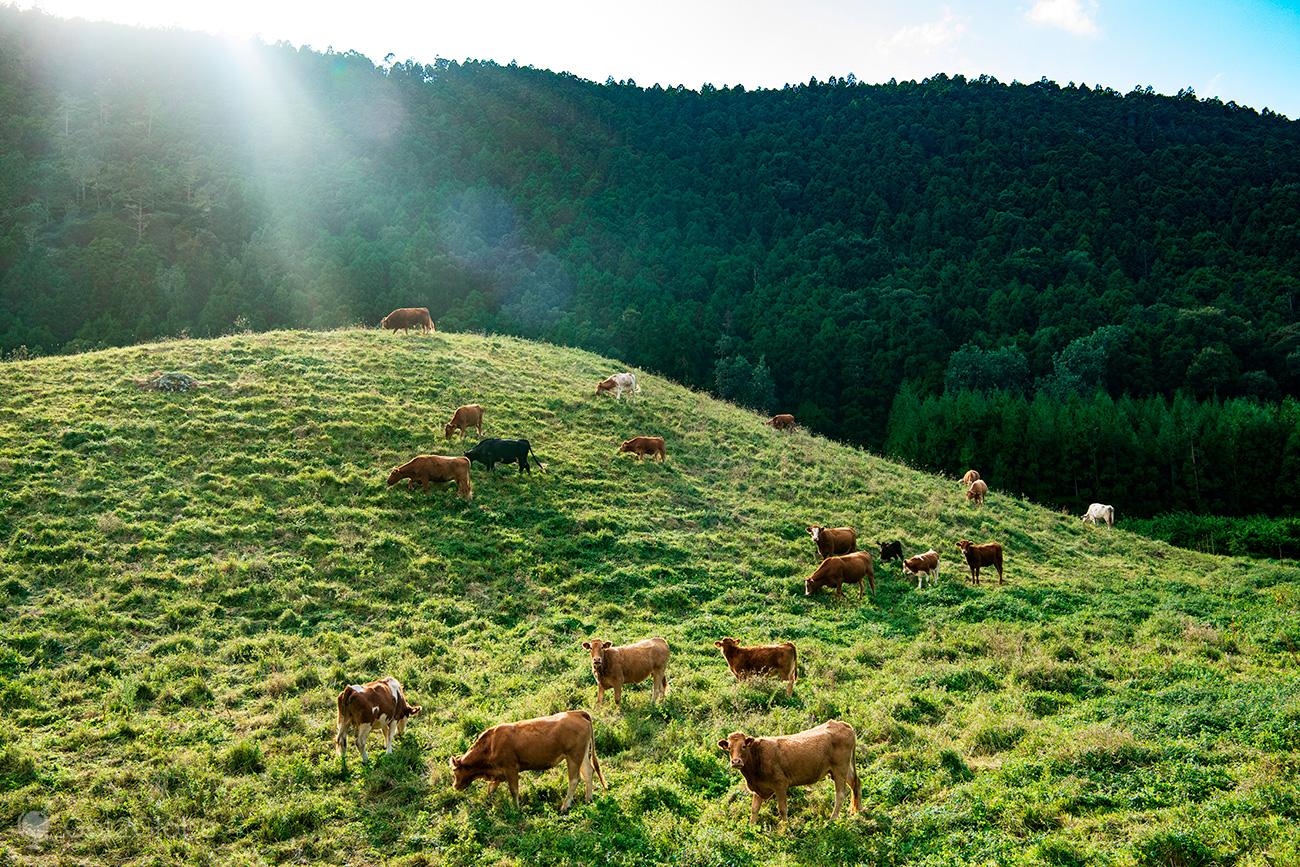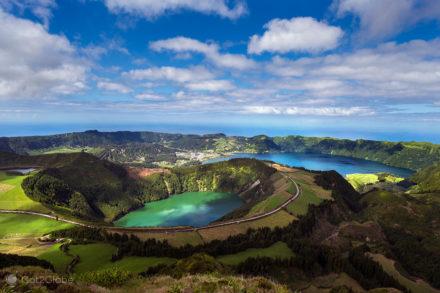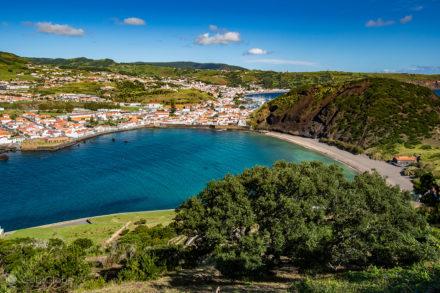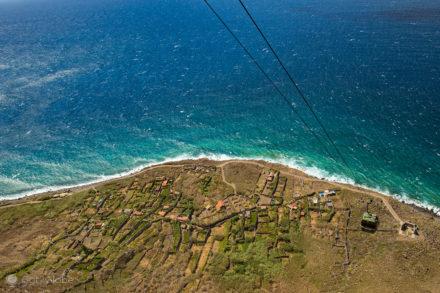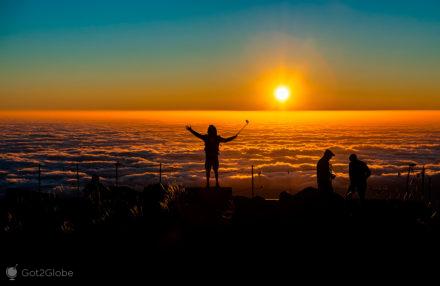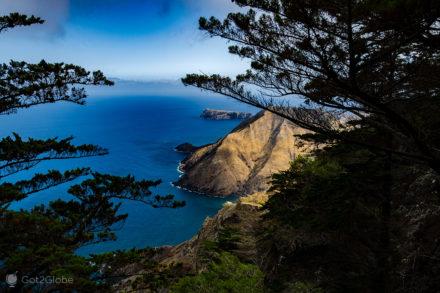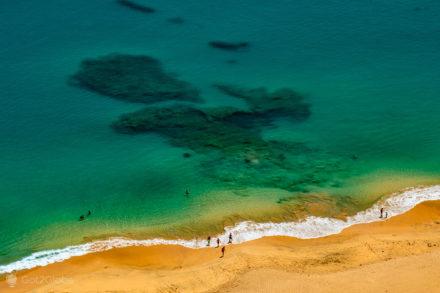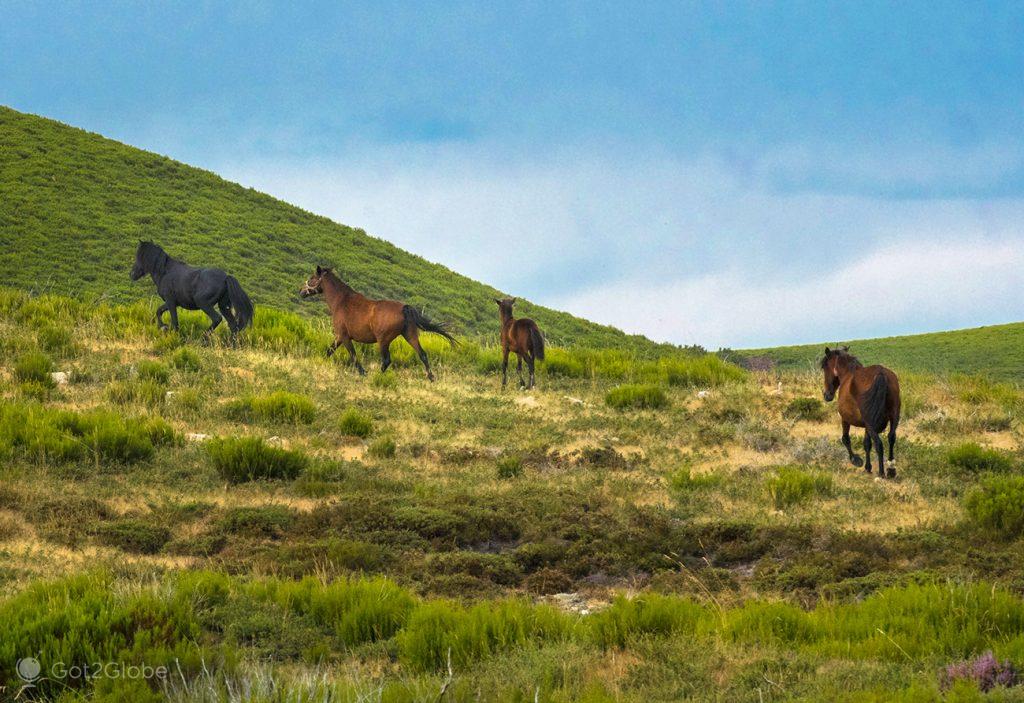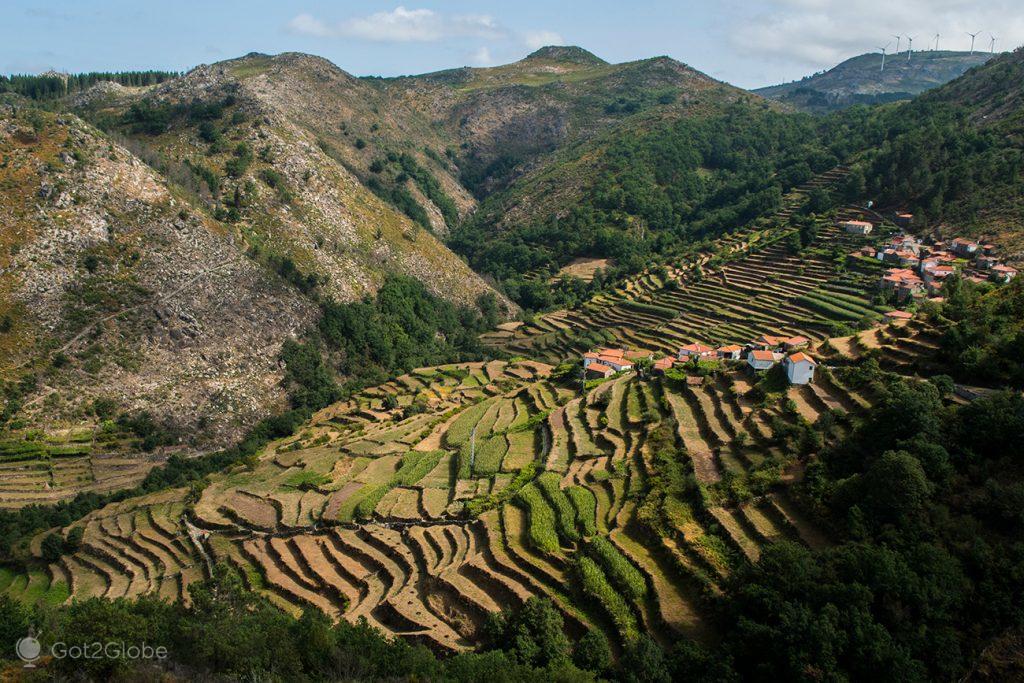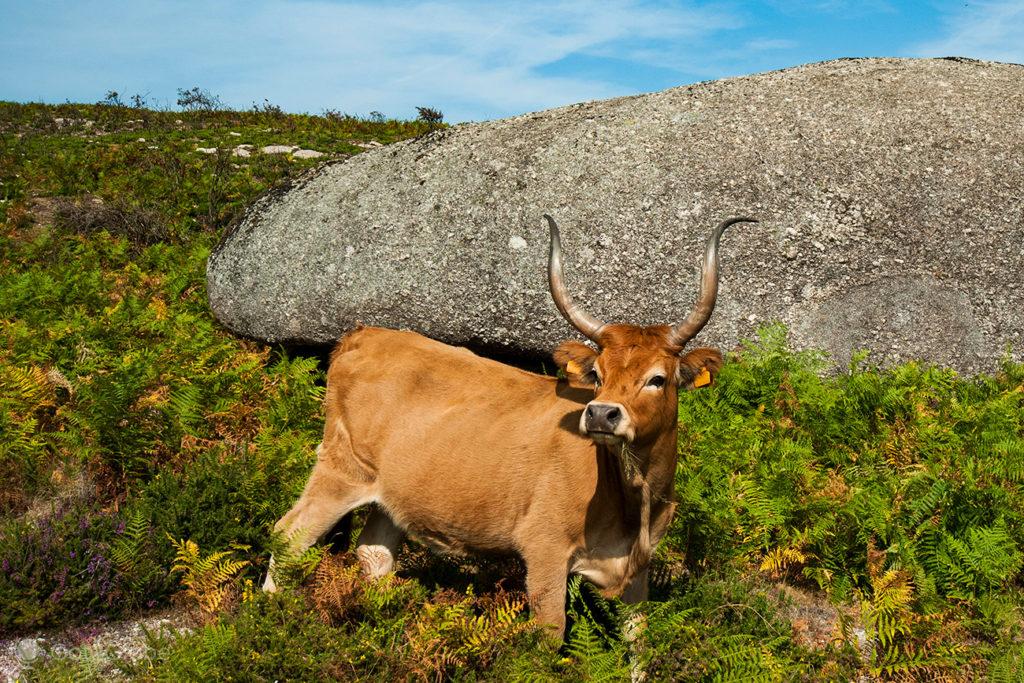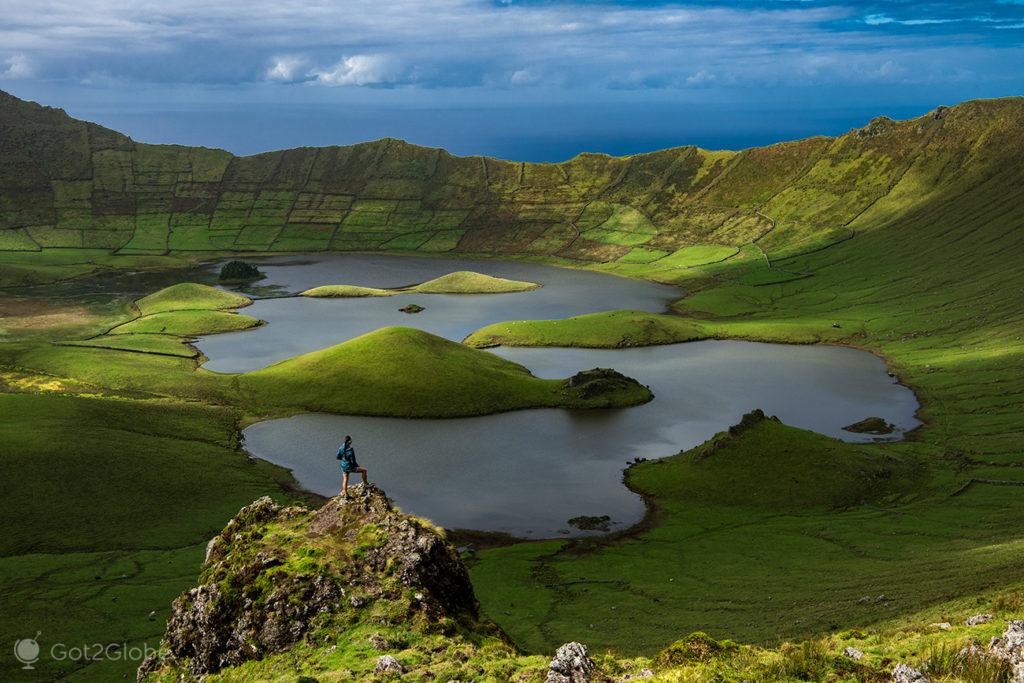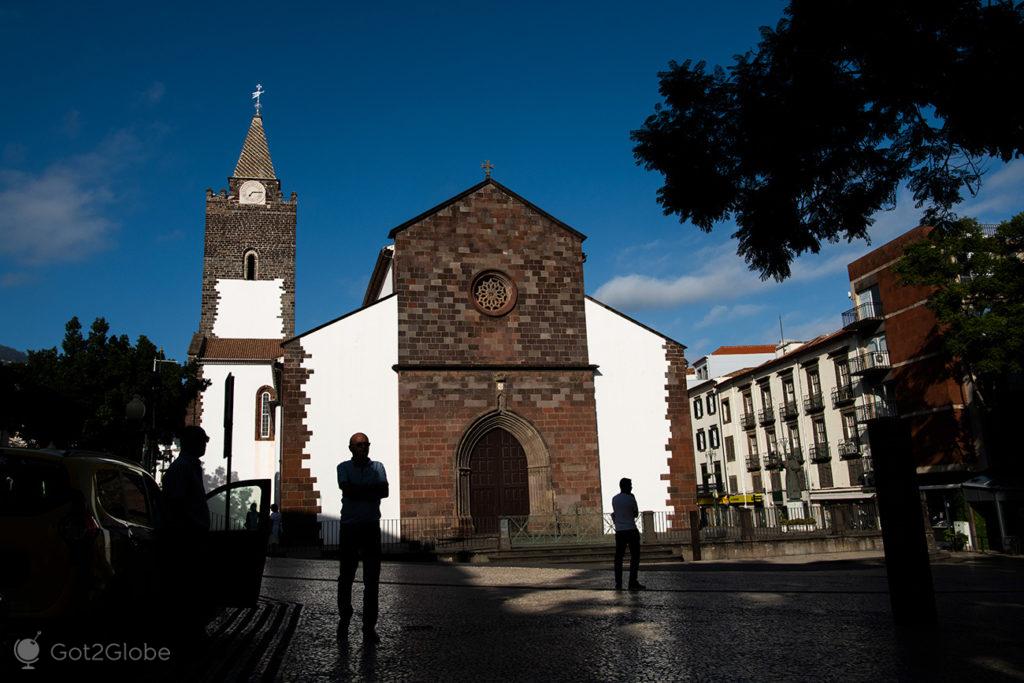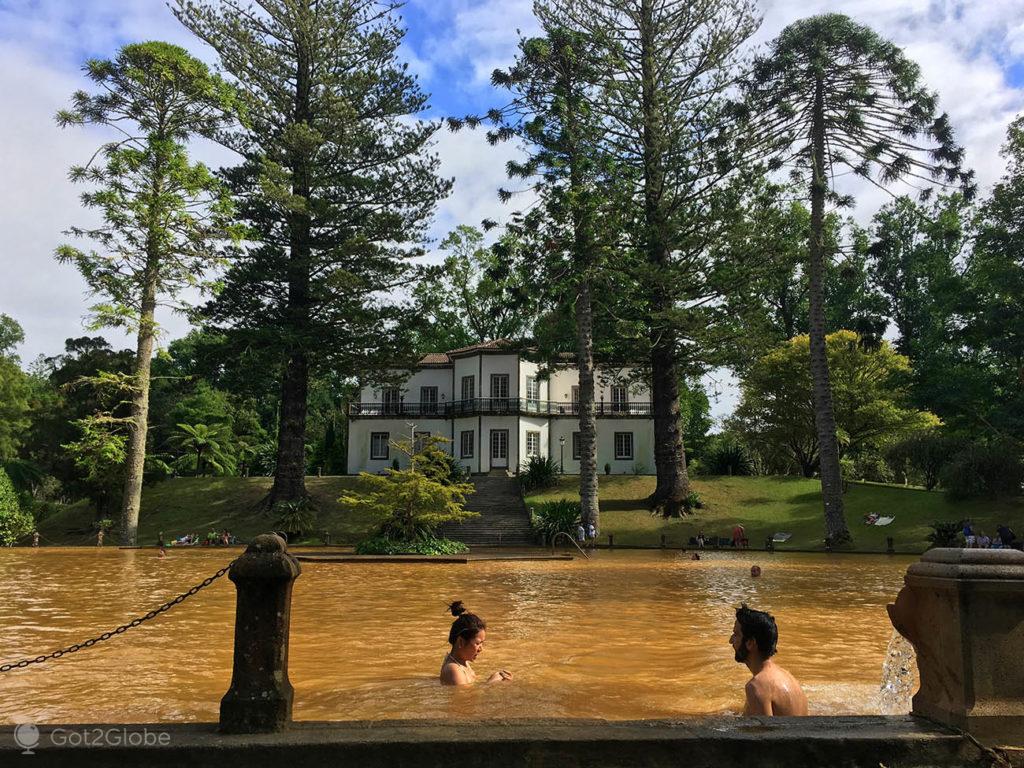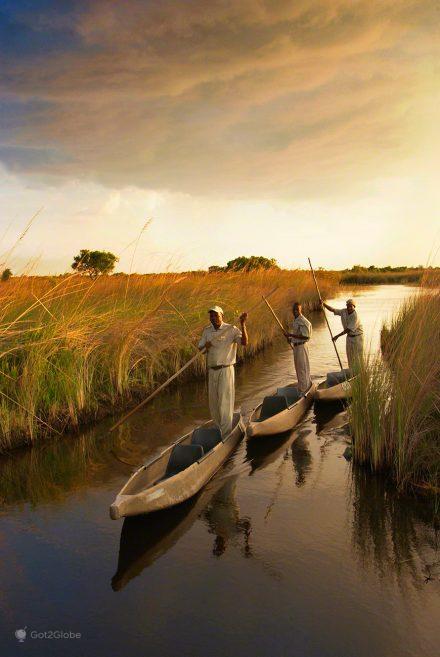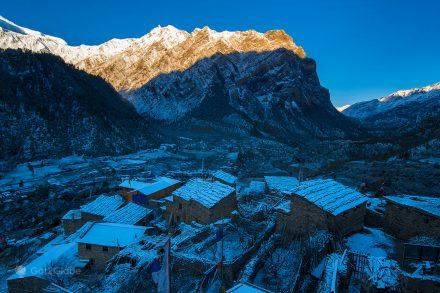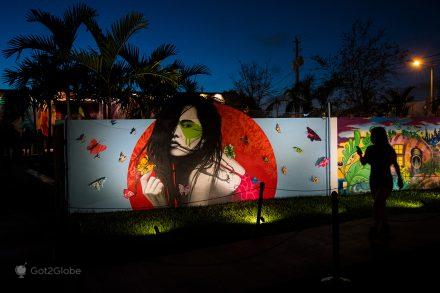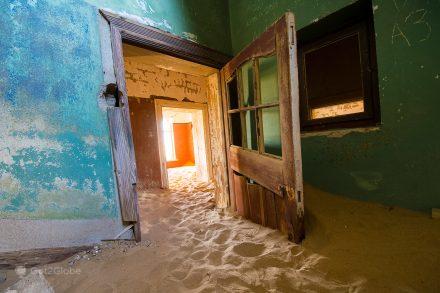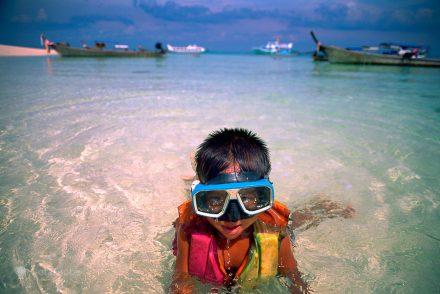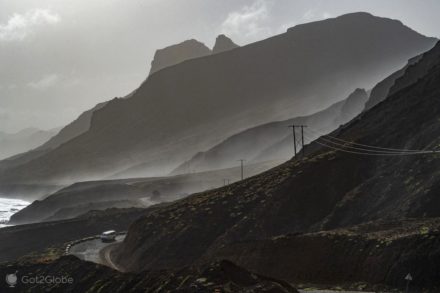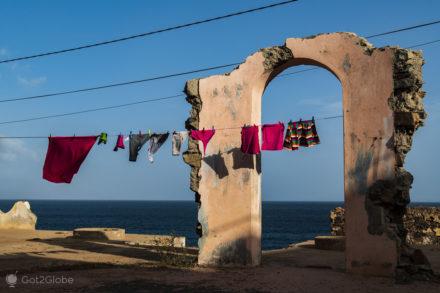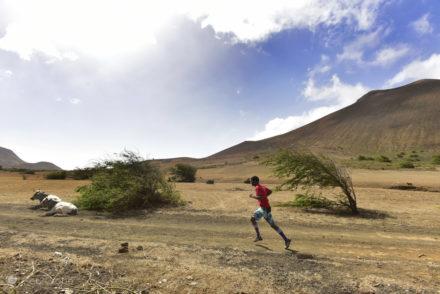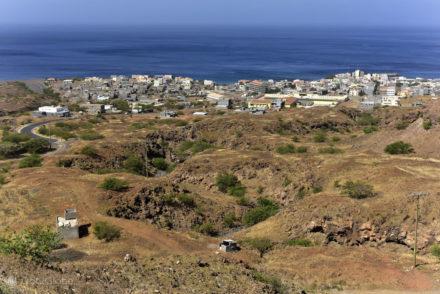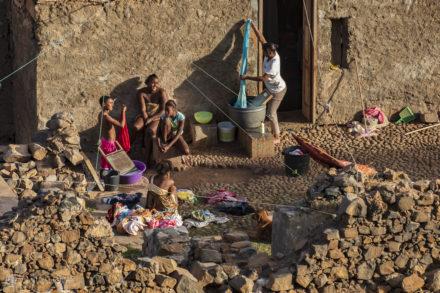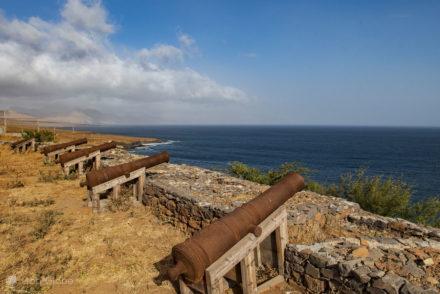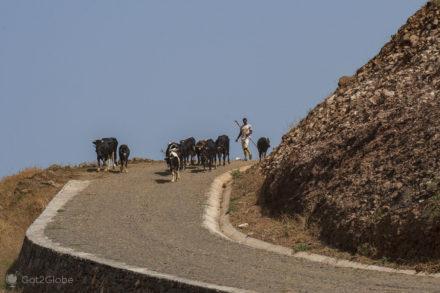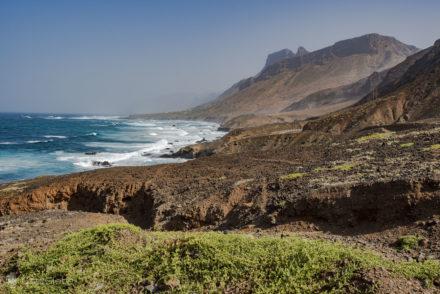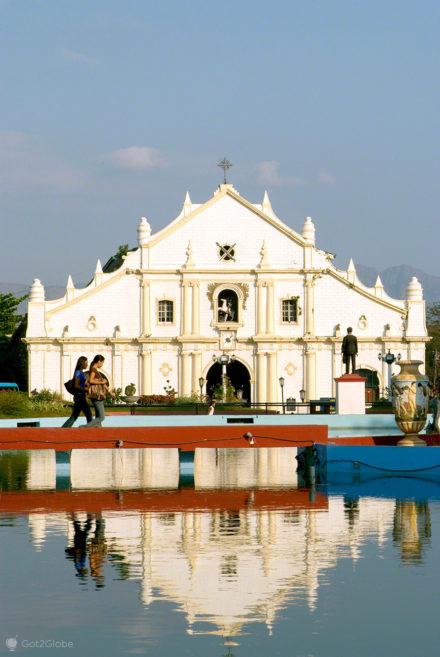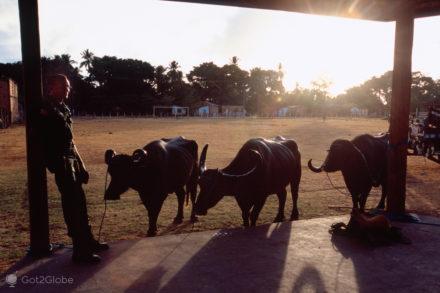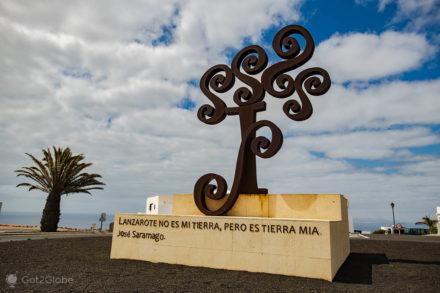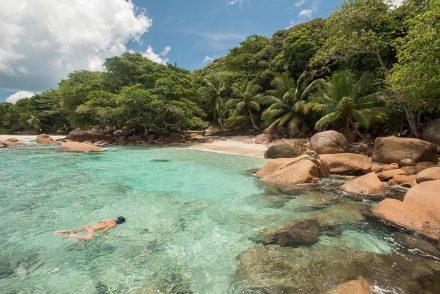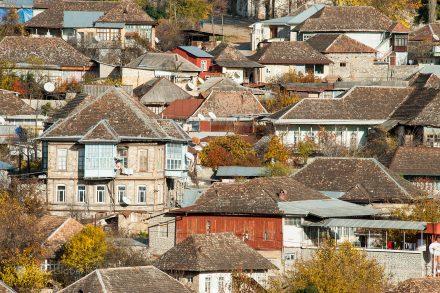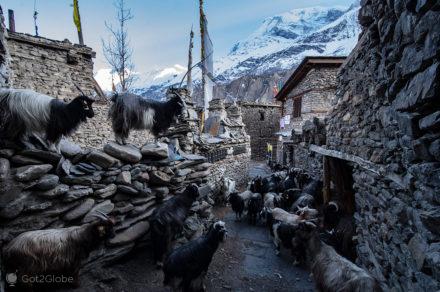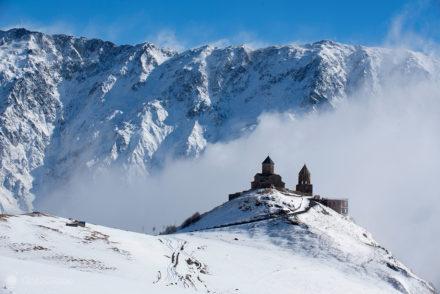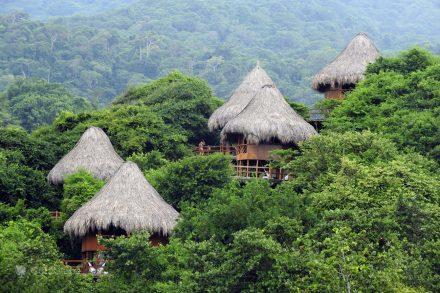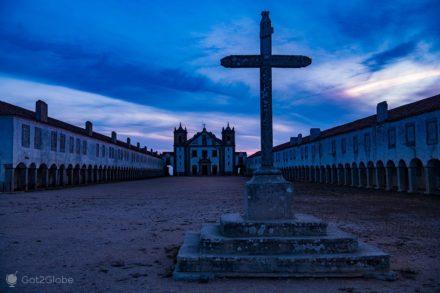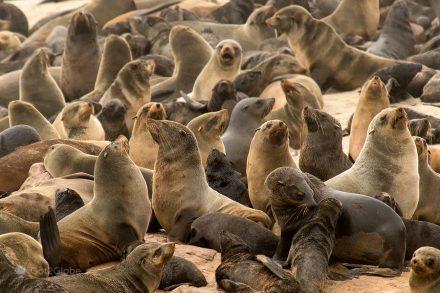It was almost eight at night. We were entering one of the Casas at Quinta do Fragoso.
As we approach, the headlights reveal three or four Frisian cows. Delighted to devour the soft, damp grass of the front garden, they blocked our access to the door.
We were forced into a special expulsion operation that left them mooing in a bad mood. They returned after a few minutes and curled up right there for the night. Too tired to beat them, we decided to enjoy their ruminant company.
We had already come from almost two weeks in the Azores. Cows had become part of our days but this new way of having them almost like a sofa company, came as a fun novelty.
We were coming from a stormy sequence where we only got the calm on the last day of São Jorge.
In Graciosa, from the first morning on, we found ourselves treated to a delicious Azorean Autumn-Summer.
Once Again, the Omnipresent Azorean Cows
As soon as we descended from the clearing of Quinta do Fragoso to the National Road 1-2 that goes around the island, we returned to socializing with the cows.
A large herd was traveling along a stretch of asphalt, exiting onto a path. It was enough time for us to leave the car and indulge in some photos and lively chatter with the owners.

Herd of cows in a single file and on their way to a pasture in the interior of the island.
Despite the attention that the cattle demanded of him, Mr. Humberto and his wife talked to us with all the sympathy that Graciosa could grant us. “Look, I'm here with 70 cows. Last year, I had to kill twenty. We don't like it, but the rules of the European Union are there, here in the Azores there is a lot of milk. Where is the bull?”, Mr. Humberto asks his wife. Confronted with his disappearance, he apologizes and runs up the path.
We would soon see him behind the wheel of a classic John Deere tractor, one of our favorite brands, right after Massey Ferguson with whom we shared much of our childhood on earth.
From Alto do Sul where we were walking, we traveled to the shallower south, below the patch of minifundios of different tones in which the island's interior unfolds.
At times, this agricultural pattern gives way to the coastal, semi-detached and multicolored houses of Carapacho.

Carapacho's semi-detached and multicolored houses. place of spas and natural pools.
A Rejuvenating Pass through Vila Termal do Carapacho
The village is above all famous as a beach and spa resort. We were, however, already well out of Estio and the spas remained closed.
We peek at the natural pools below. Out of nowhere, three expats show up, undress and enjoy an, apparently usual, morning sea bath.
The example proved tempting. In three times, we also send our dives, swim a few laps, savor the tepid Atlantic as and while we could.
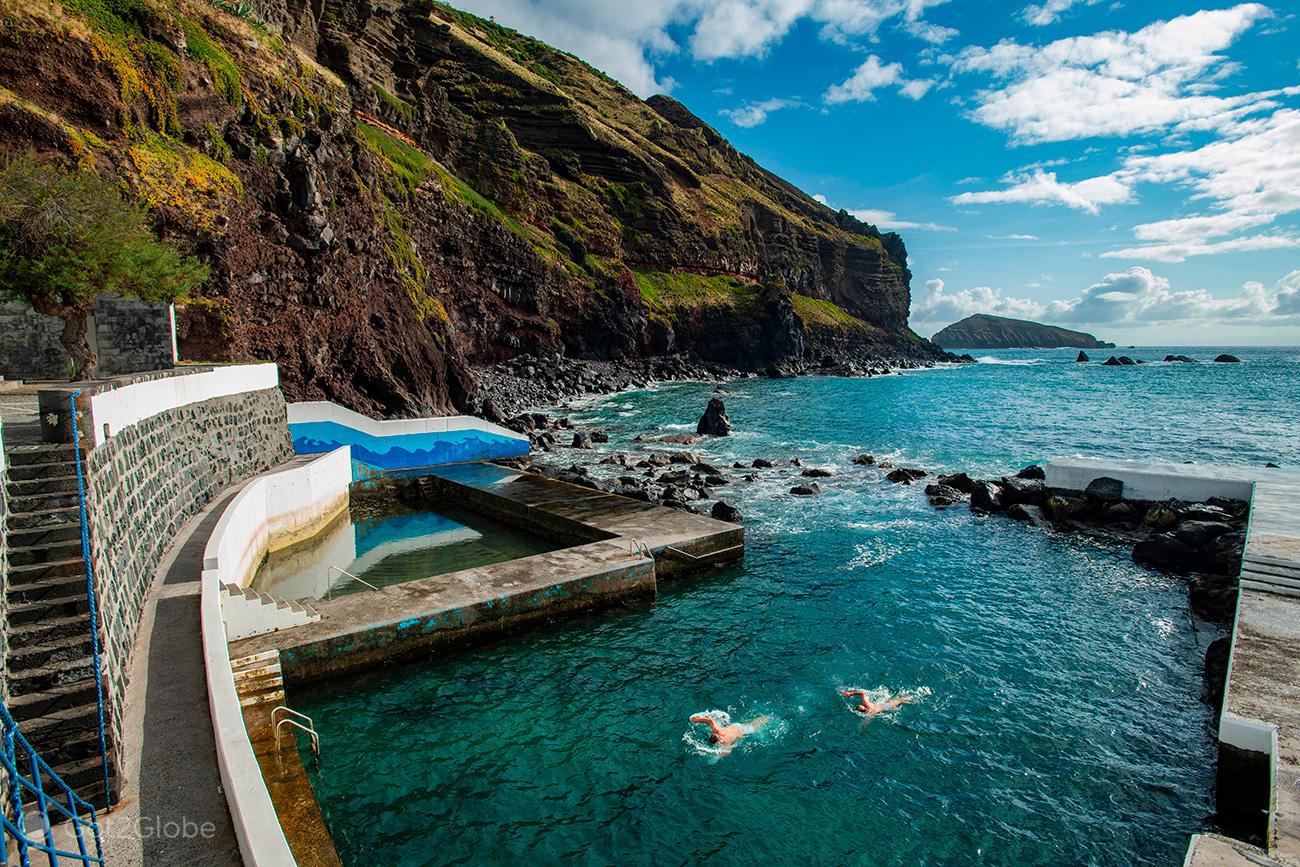
Swimmers in a natural swimming pool in Carapacho.
When we got back to the car, the sun that was still rising over the horizon warmed us and recharged our batteries.
We went up to Carapacho Lighthouse. Its promontory reveals three very distinct views: towards the southeast, the islets and rocks and, at the top, Ponta da Restinga.
Back and forth, where we had come from, the houses of Carapacho, set between a rough slab of black lava and a long verdant slope.

The houses of Carapacho on the edge of a slope below the Caldeira da Graciosa.
Rival Panoramas from the Carapacho Lighthouse
Above, inland opposite Ponta da Restinga, rose the wide cone of Graciosa's most exuberant volcanic formation, the Caldeira Massif (405m), large enough to occupy the entire southeastern third of the island, arranged around a vast Boiler, 1600m long by 900m wide.
We would ascend from there and descend into its depths. From the vicinity of the lighthouse, we limited ourselves to contemplating its walled slope, and the edge of the summit combed by a forest of cedars. A duo of black oxen with tonnage and intimidating bull looks seemed to guard the Caldeira.
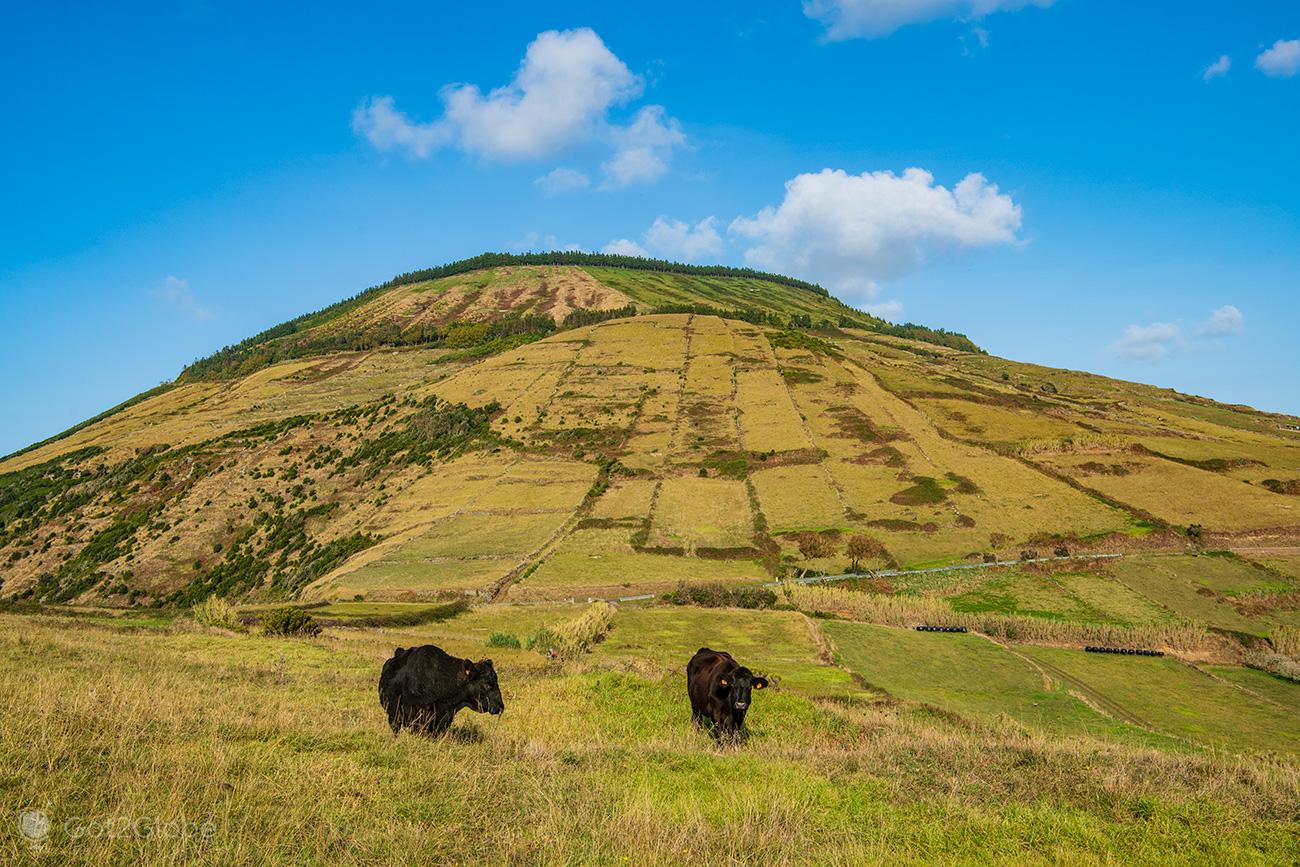
Two black oxen seem to block access to the edge of the Caldeira, next to the Carapacho Lighthouse.
We point to the next village. Officially named São Mateus, the parish is best known for its historical name of Praia, whose main location is Vila da Praia or Porto da Praia. The reality we found there still does absolute justice to both baptisms.
São Mateus, or Praia. An elegant town and the beach in Ilha Graciosa
A long promenade that follows the curve of the bay is delimited by white houses, of which the church of São Mateus stands out. The houses are sprinkled with one or another facade in pastel tones in harmony with the golden sand.
There is a consensus among Gracienses that Porto da Praia has the only decent sandy beach on the island. When we walk over the long wall that protects the houses from the Atlantic, we see it invaded by a tide of fine algae that piled up to the point of holding back the waves.
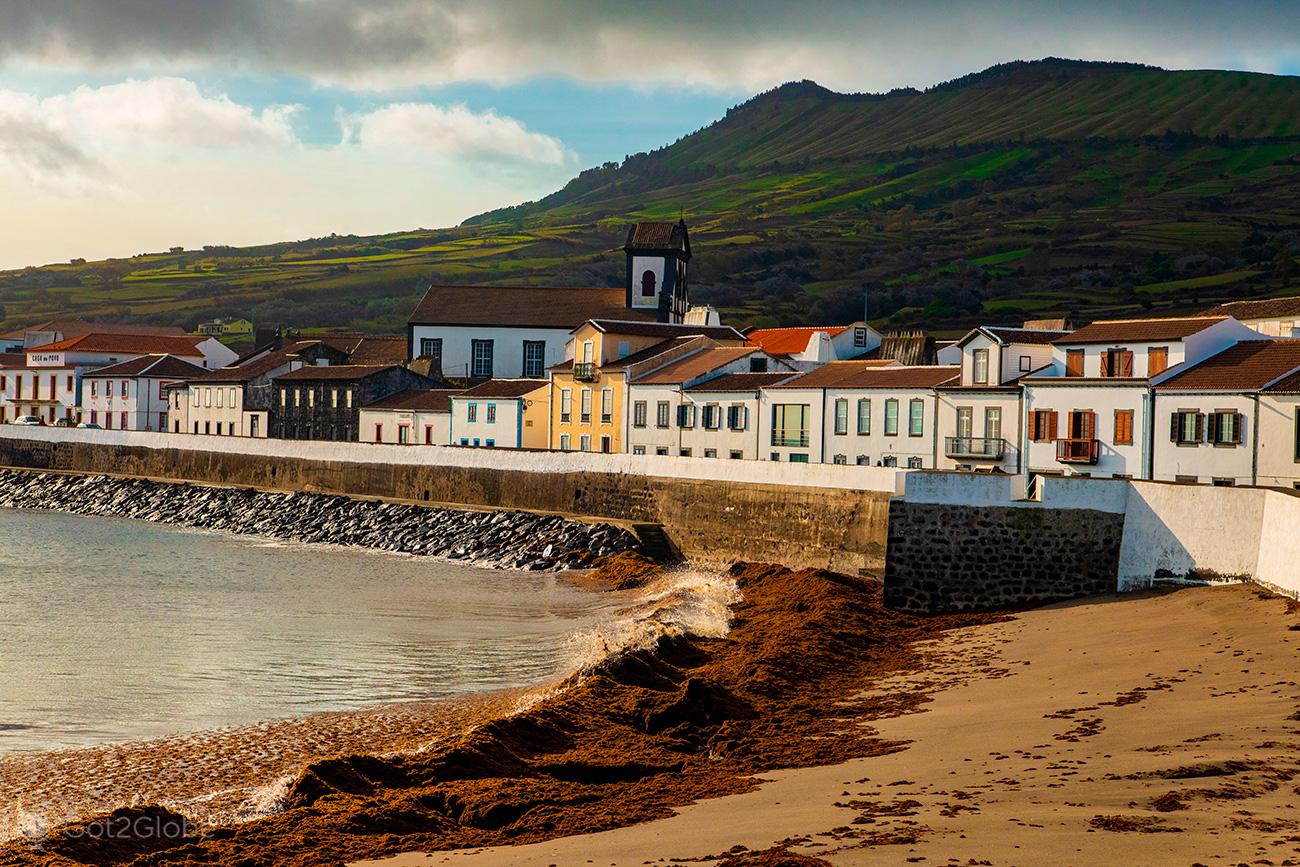
The target houses on the beach front, with the edge of the Caldeira above.
Walking outside, the wall becomes a higher wall that, in addition to the current of houses, protects a series of cafes and esplanades, extending to streets and alleys, sometimes to the Rua dos Moinhos de Vento, which houses two of dozens of examples of the island, these, converted into peculiar rural accommodations.
We pass over the portico that opens onto the beach. We unveil the town's port domain and, from the top of the pier, the pronounced rounded shape of its seafront and the outlines of the edge of the Caldeira, a plane above the village's roofs.
Ascension to the Great Caldera of Graciosa Island
It was time to go up to the Caldeira. Along the way, we turned only to the Chapel of Nossa Senhora da Saúde, with the infallible purpose of being dazzled by the opposite perspective of Praia: that of the distant village, imposed by the sea, beyond an extensive walled patchwork, furrowed by canes, sometimes pasture, sometimes with other crops and that the sun and clouds gilded or shaded at will.

Coastal houses of Praia, or São Mateus.
We left the chapel deserted as we had found it. We return to the road and to the bucolic countryside of Graciosa. We climb the slope to Fonte do Mato. From where we proceed to Canada Longa, on the verge of Furna da Maria Encantada. We started walking again.
A steep, zigzag path leads us to a kind of portico opened up because, in the island's volcanic youth, lava overflowed the crater's rim.
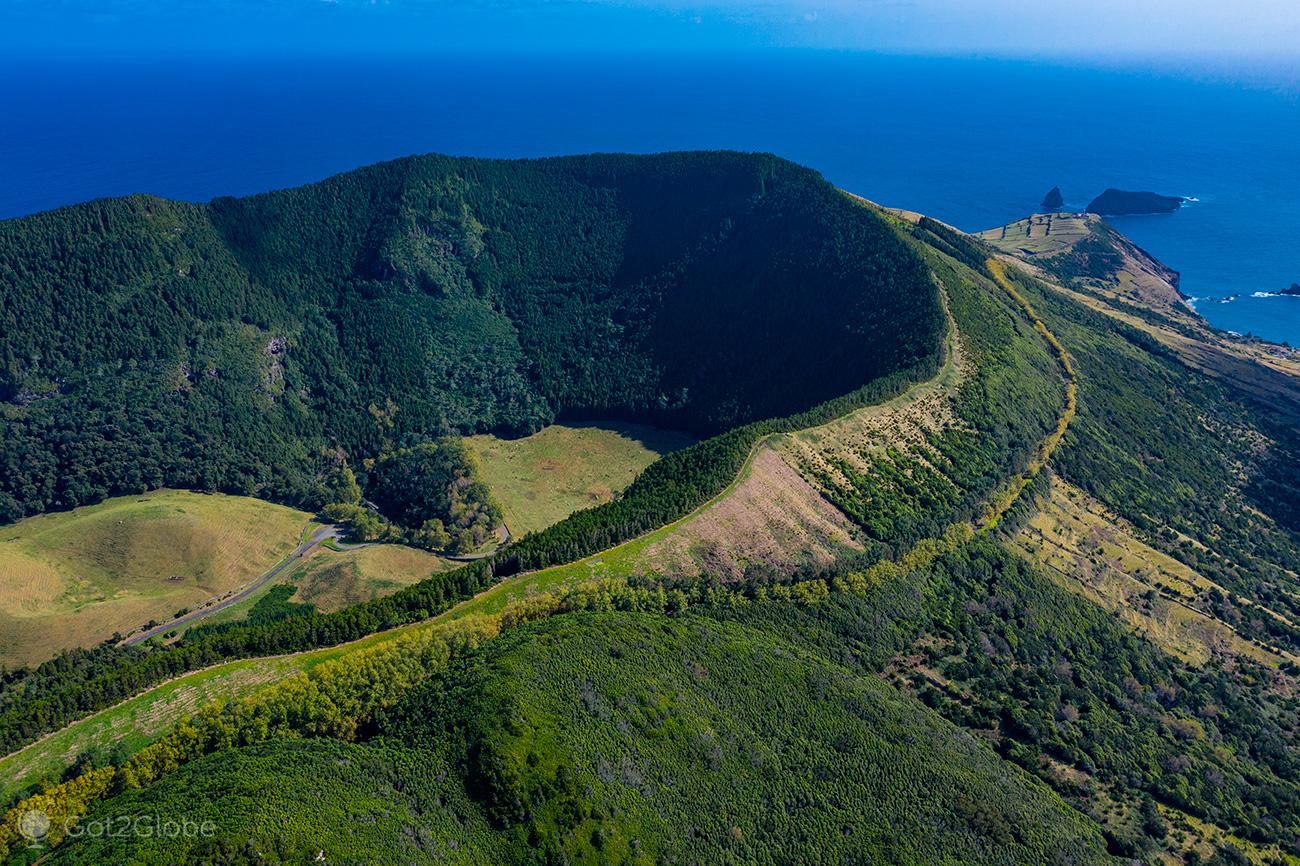
The main volcanic expression of the island of Graciosa, its great Caldeira.
Inside, we noticed that the growing trees had blocked much of the view around the caldera. By contrast, the chirping of birds sounded and resonated with chilling intensity.
We hear you. We let ourselves be enchanted by its unexpected symphony.

Indication to a panoramic tower on the edge of Caldeira da Graciosa.
Soon, we return abroad. We went around the edge of the caldera, always climbing, to an observation tower that revealed the vast southern part of the island.
We saw Ponta Branca, Luz and Alto do Sul, where we had started the day. And, as had happened from the Chapel of Nossa Senhora da Saúde, new and gracious small farms and houses in Gracios.
Entering the Caldeira and the Descent into the Enigmatic Depths of Furna do Enxofre
But a real incursion into the Caldeira was needed. We return to the car. We pass through the rough, orange tunnel that leads to its core and complete the road that skirts the Styx's inner lagoon.

The tunnel that leads to the interior of the great Caldeira da Graciosa.
The entrance to the Furna do Enxofre complex holds us back. It was the most mystical of the Caldeira's depths. A new walk was thus required, passing through the Visitors' Center building, considered the headquarters of the Biosphere Reserve and the Natural Park of Graciosa.
This new trail leaves us at the top of a spiral staircase (with 183 steps), closed by a mossy tower, with a window on each of the levels.
Each of the windows deepens the view of the great lava cave we were entering.
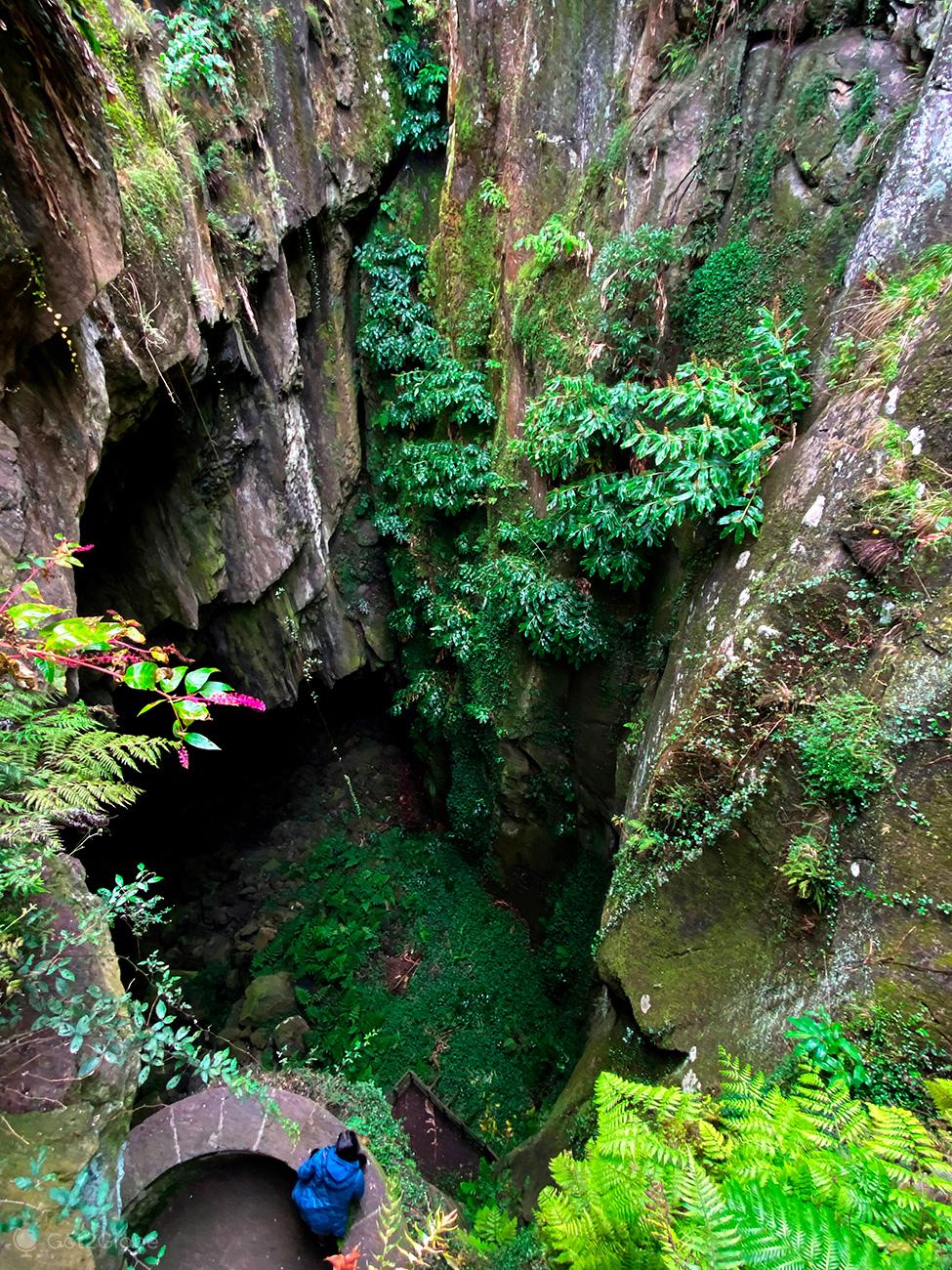
Visitors look at the entrance to the Furna do Enxofre cave.
Finally, at the bottom, we glimpsed a lagoon on which a rowboat floated. It turns out that this pond hides a fumarole that can release carbon dioxide in dangerous concentrations. It will be the main reason why we find the access to the banks of the lagoon fenced.
We admire the Julian panorama around us, with a mainly visual fascination. Not so much the scientific that led French naturalists and researchers, including Prince Albert of Monaco, to explore the cave at the dawn of the XNUMXth century.
From Porto Afonso to Convivio with Franco Ceraolo and his Donkey Association of Graciosa
From the cave of Furna do Enxofre and the great Caldeira da Graciosa, we pass to the tiny ones of Porto Afonso, deepened into the reddish cliff of the inlet by fishermen who have long sheltered their small fishing boats from the storms and destructive waves there.

One of the artisanal fishing boats kept in one of the Porto Afonso caves.
In the undertow that had swept the central group, the sea remained choppy. A single solitary visitor surveyed the state of the sea from the port's jetty.

Graciosa resident enjoys the sea in Porto Afonso inlet.
So, in the vicinity, we decided to go to Esperança Velha and take a look at Franco Ceraolo's farm. Franco is an Italian from Rome, the capital where he worked as a set designer with directors with the notoriety and work of Frederico Fellini, Bernardo Bertolucci and Martin Scorsese.
When he retired, Franco decided he wanted to live on an island. The ones in the Italian Mediterranean were already too touristy. He ended up reading about the Azores and, later, visiting all the islands of the archipelago. He decided to buy a farm and settle in Graciosa. The same farm where he welcomed us.
Franco arrived at Graciosa in 2007. He found that the number of donkeys and their usefulness on the island were decreasing visibly, not least because they had almost all owners of advanced age.
As Franco tells us in his almost perfect Portuguese, while he straps some of his donkeys with carrots, “I arrived here interested in raising animals, after all we were in the Azores and Graciosa. But what animals? Cows? There were too many cows.
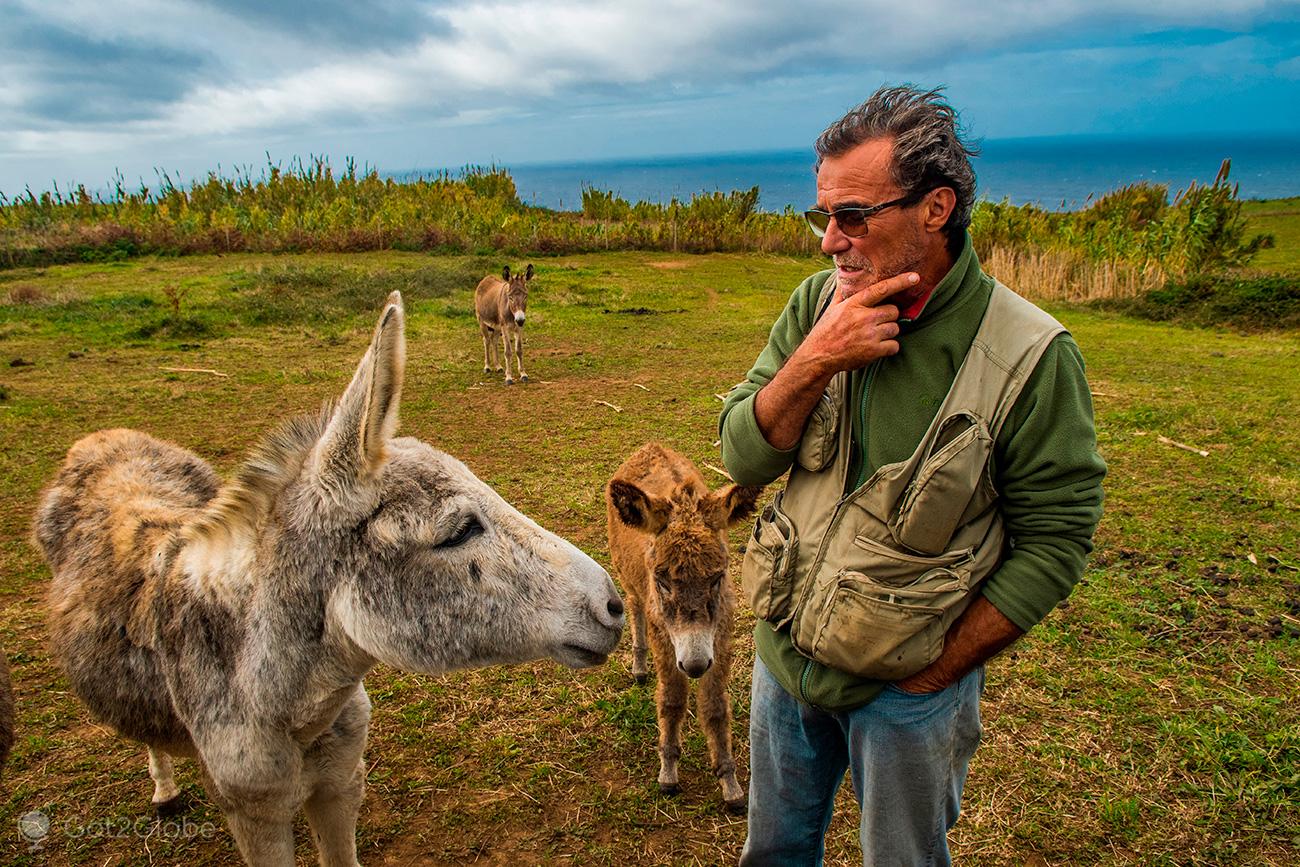
Franco Ceraolo in the company of two of the donkeys he takes care of on his farm.
Donkeys, unlike cows, were on a path of extinction. In 1926, the island had 6000 inhabitants and 1600 donkeys, to the point that Graciosa was known as the Donkey Island. He decided to promote the preservation and certification of the dwarf donkey on Graciosa Island. Superior purpose for which formed a breeders association with a group of friends.
Now, the inhabitants of Graciosa are just over 4000 people and its dwarf donkeys are only about 70. Only 17 people see it here.”
In the meantime, Franco and the association managed to recognize Graciosa's autochthonous breed in Portugal. Recovering the number of donkeys also involves protecting those that are scattered on other islands in the Azores, such as the neighboring São Jorge. And for registering in a herd book the specimens with the characteristics that make them Graciosa dwarf donkeys.
And it should be noted that the small donkeys from Graciosa – they can measure up to less than a meter in height –, originating in North Africa, can recover the great use they once had. In the countryside, to support agricultural work. And even as tour agents. They are very gentle, easy to control and ideal for short walks, as long as the rider doesn't have too much weight.
“Here at Graciosa, organized some donkeys (group tours) very funny with them. Children love them.”
We sat down for coffee with Franco and his Lisbon wife Sandra. We talked a little more about the island's wine production. And about the value of preserving the historic-traditional architectural heritage of Graciosa and wherever it is, which the couple cherished as much as we do.
With time then, and always counting, we thank them for their kindness and say goodbye, to the apparent displeasure of the donkeys who line up to see us go, intrigued by the brevity of such an embassy.
The Panoramic and Blessed Summit of Monte da Ajuda
With the afternoon coming to an end, we cross the island's capital, Santa Cruz. From one of its streets, we ascend to the scenic hill of Ajuda (130m).
It was at the foot of this volcanic cone that, from 1450, the pioneer settlers of Graciosa. From those remote times onwards, the village expanded to the vast and harmonious houses of today's Santa Cruz.

The elegant houses of Santa Cruz da Graciosa, capital of this island of the Central Group of the Azores.
And, when we reached the summit, we found that, even though it was already Santa, the city was blessed to triple by the trio of chapels of São João, São Salvador and Nossa Senhora da Ajuda.
Below, occupying the center of the crater and clashing with the sacredness of the place, the red and white of the local bullring stands out, still used, especially in August, at the time of the bullfighting fair in Santa Cruz.

Aerial view of Monte da Ajuda, above the capital Santa Cruz da Graciosa.
A Rocked Wandering across the Atlantic by Santa Cruz da Graciosa
We went down and dedicated ourselves to the capital. We walk around the square and its peculiar lagoon, from where the towers of the Parish and Church of Misericórdia project high above the roofs of the faithful.

Almost setting sun gilds the Parish Church of Santa Cruz da Graciosa.
Even without seeing it, the Atlantic Ocean rabid.
The brooding of its spaces ended up attracting us to the walled seafront and the lava seashore that enclosed the center of the city. There, as we approached the Ermida do Corpo Santo, the clash of waves on the jetties and cliffs produced exuberant explosions of sea that alienated us from the other scenarios.
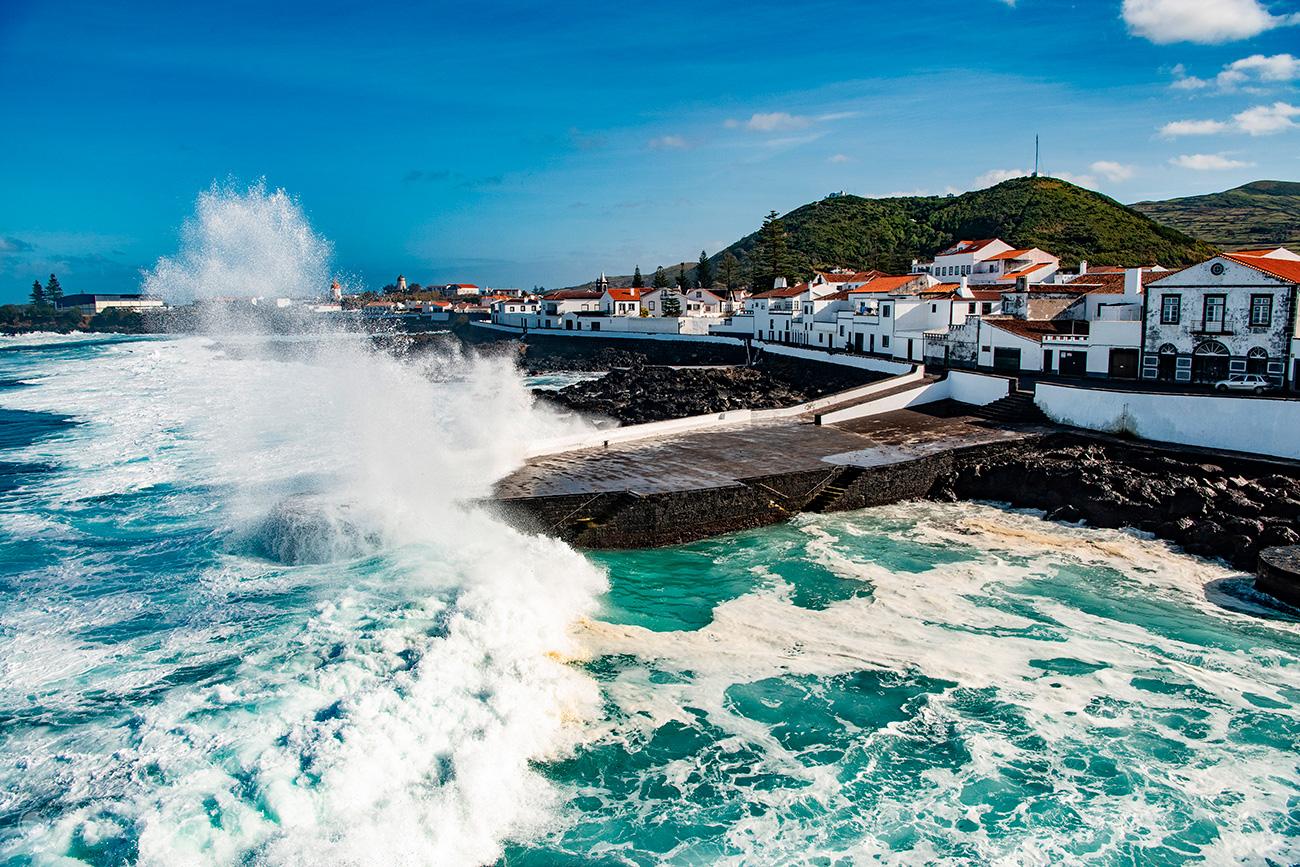
Vacancies crash with a crash against one of the piers on the Santa Cruz da Graciosa seafront.
Other waves, determined in their own way, climbed the dock ramps and almost took over the asphalt we were walking on.
Along the way, we are intrigued by the mega-installation of art that became the collection of buoys and other nautical paraphernalia on the prow of a corner house between the nearest boarding ramp and Rua do Corpo Santo.

Strong waves make the Atlantic almost reach Rua do Corpo Santo.
Graceful but also Dramatic End of the Day at Ponta da Barca
Consistent with the marine theme, with the sun about to sink into the Atlantic, we head to Ponta da Barca and the homonymous lighthouse.
There, while a lighthouse resident fed his chickens, we looked for a summit with a simultaneous view of the lighthouse, the cove below and the Ilhéu da Baleia off the coast.
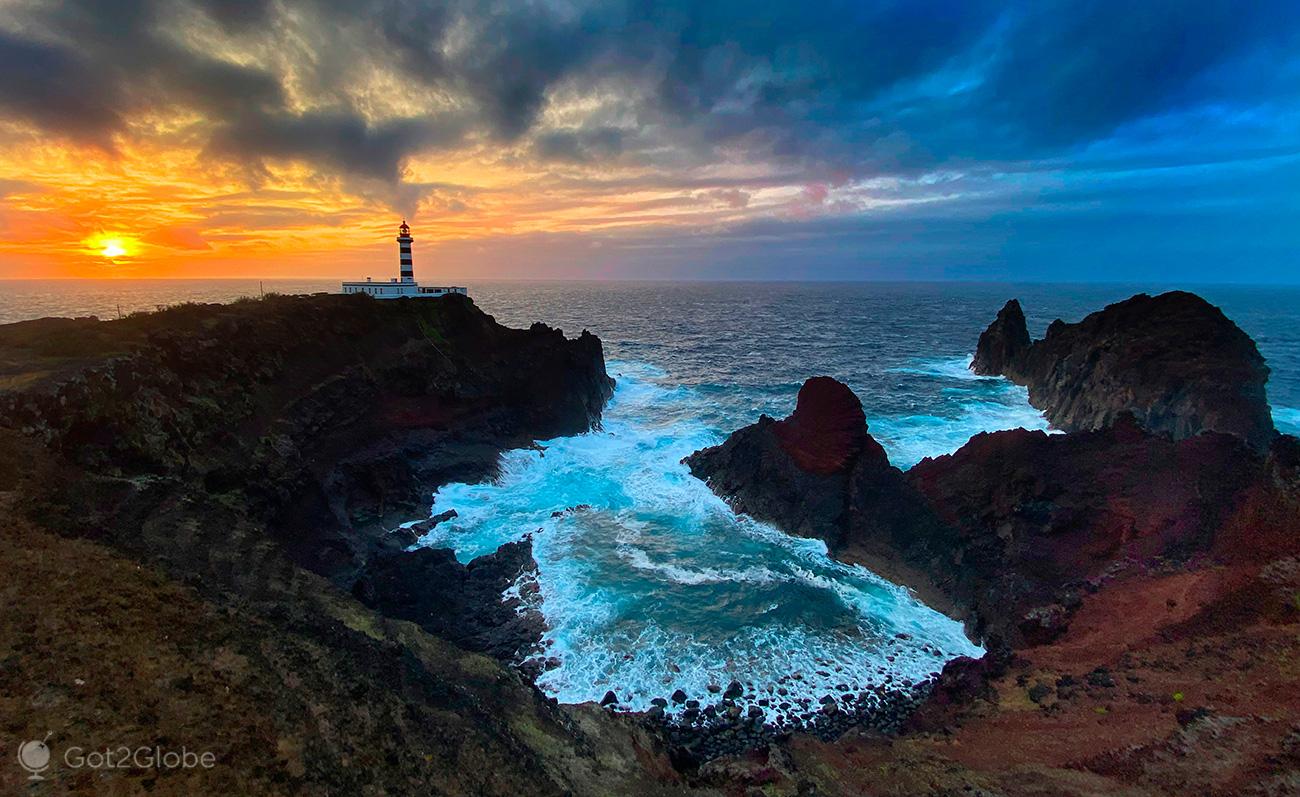
A resplendent sunset west of Ponta da Barca
We found it already in run mode. And we ended the long day of discovering the island more than surrendered to Graciosa. You Azores are always the Azores.
We didn't expect anything else.
